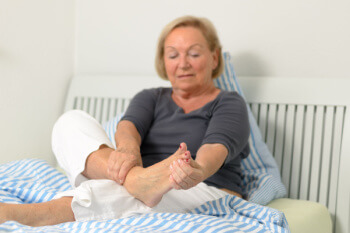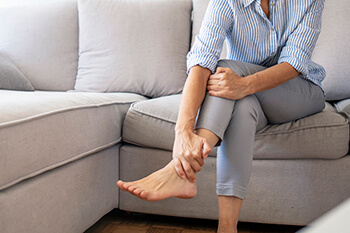
Gout, a form of arthritis, affects the feet due to high uric acid levels. It is well-studied, with genetics playing a significant role. Symptoms can range from none to acute attacks and chronic conditions. Diagnosis involves tests and imaging, such as finding monosodium urate, or MSU, crystals in fluid, and advanced scans help to monitor it. Treatment includes managing flares, chronic issues, and preventing future attacks. Medication, lifestyle changes, and education are key. If you have gout and it is affecting the joints of your feet, it is suggested that you are under the care of a podiatrist for a proper diagnosis and advice in managing this painful condition.
Gout is a foot condition that requires certain treatment and care. If you are seeking treatment, contact Scott Samera, DPM from Samera / Foot + Ankle. Our doctor will treat your foot and ankle needs.
What Is Gout?
Gout is a type of arthritis caused by a buildup of uric acid in the bloodstream. It often develops in the foot, especially the big toe area, although it can manifest in other parts of the body as well. Gout can make walking and standing very painful and is especially common in diabetics and the obese.
People typically get gout because of a poor diet. Genetic predisposition is also a factor. The children of parents who have had gout frequently have a chance of developing it themselves.
Gout can easily be identified by redness and inflammation of the big toe and the surrounding areas of the foot. Other symptoms include extreme fatigue, joint pain, and running high fevers. Sometimes corticosteroid drugs can be prescribed to treat gout, but the best way to combat this disease is to get more exercise and eat a better diet.
If you have any questions please feel free to contact our office located in Lake City and Branford, FL . We offer the newest diagnostic and treatment technologies for all your foot and ankle needs.








